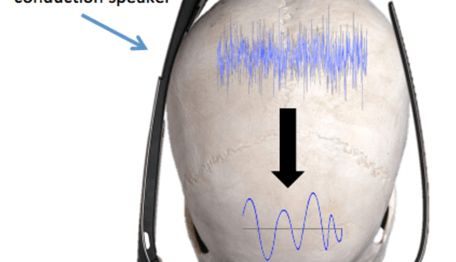Your passwords replaced by the frequency response of your skull
July 27, 2016
on
on

In some company or university laboratories, the famous connected glasses from Google are used in scientific experiments, operations and medical examinations. The Google Glasses are often shared among users. To avoid leaking and disclosure of sensitive data, notably passwords and access codes, researchers at the universities of Saarbrücken and Stuttgart have come up with SkullConduct. This biometric system using osteophony – the transducer is integrated into the glasses – identifies the wearer by analysing the resonance of his skull. An audio signal (of white noise) injected into the skull bone by the osteophonic transducer of the glasses, propagates through the tissues of the skull before being captured by a microphone (also integrated into the glasses). This signal is analyzed to obtain an individual signature, unique to the form of the skull of the individual. The signature allows assigning a unique access code to each wearer.
As a result of this, it is easy to block private data when an unknown user uses the glasses. When the registered user of the glasses is identified, this personal data again becomes available.
The results obtained seem encouraging, but the work is still in the research stage. A similar process could be adapted to the users of smartphones. The use of ultrasonics instead of audible white noise is also under consideration.
As a result of this, it is easy to block private data when an unknown user uses the glasses. When the registered user of the glasses is identified, this personal data again becomes available.
The results obtained seem encouraging, but the work is still in the research stage. A similar process could be adapted to the users of smartphones. The use of ultrasonics instead of audible white noise is also under consideration.
Read full article
Hide full article


Discussion (0 comments)